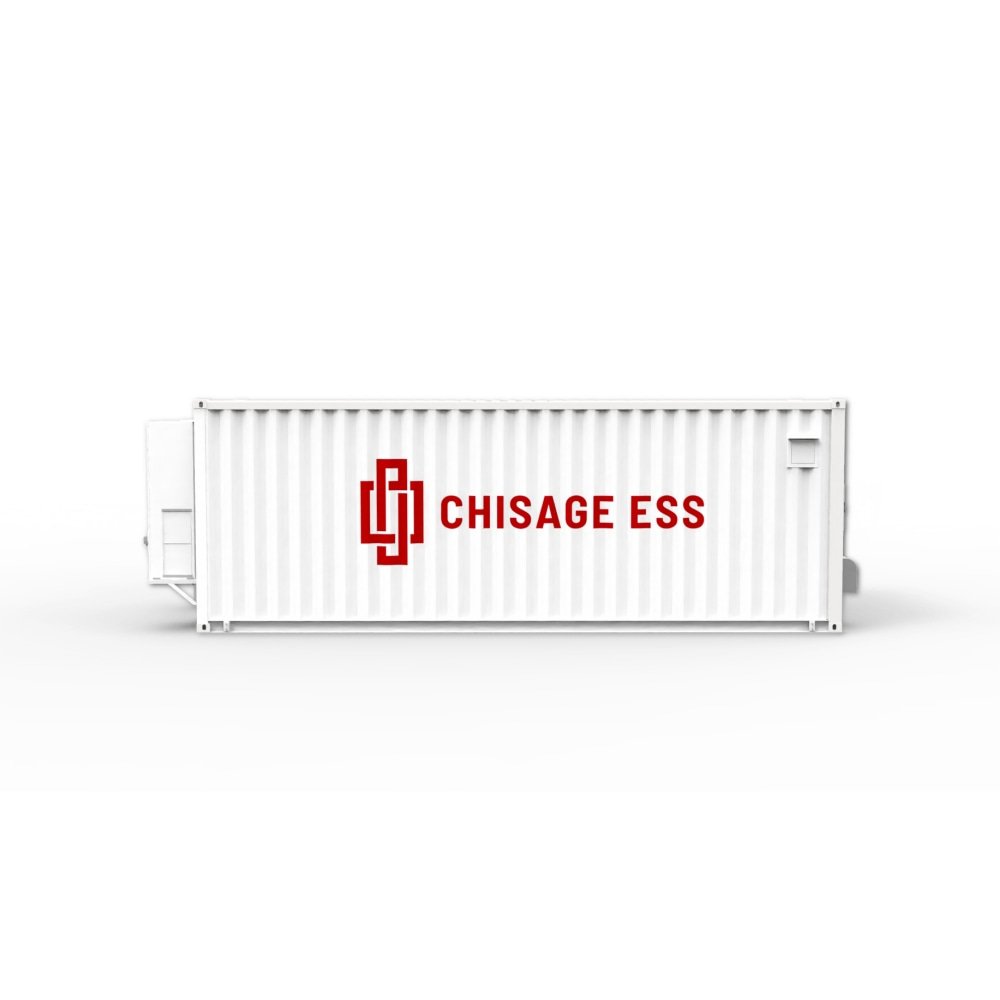ESS Container
Sudden power outages always put people in a difficult situation, resulting in significant financial losses for busy factories or businesses. If you want to use an energy storage system in a large commercial or industrial environment, ESS container is the best choice!
CHISAGE Liquid-Cooling ESS container is available in 3.354MWh and 6.709MWh capacities and is mostly used in shared ESS stations, grid-side ESS, user-side ESS, mobile energy storage vehicles, and other scenarios. It provides early warning through real-time health monitoring and performs battery condition assessment to adjust energy efficiency management strategies dynamically.
Meanwhile, our liquid-cooling battery has an IP65 dual fire and explosion-proof design with an intelligent liquid-cooled temperature control system that ensures safety and reduces power supply running costs by 20%.
Partner with Chisage ESS and choose ESS container for energy autonomy to usher in a new era of energy storage. Get in touch with us now!
3354-6709kWh Liquid Cooling ESS Container
46592Wh Liquid Cooling Battery
ESS Container
An energy storage system container or ESS container is a storage facility mainly fabricated from metal or shipping containers to store battery banks. The containerized ESS systems host various power elements that safely store excess energy from renewable sources for later use.
Usually, the containers are available in different configurations depending on the power needs and energy storage system capacity.
Advantages of Containerized Energy Storage System
With the desire to have an uninterrupted power supply, most renewable power generation institutions are opting for containerized energy storage systems. Whichever ESS facility you opt for, the rewards are numerous:
- Houses all the vital energy storage system components
- Modularization allows for easy transportation of the energy supply system
- Portable systems that can work without the main grid
- Protects power generation and distribution systems
- Ensures safety by protecting the ESS system from unauthorized access
- Play an integral role in energy stabilization, energy shifting, and load shedding
Parts of ESS Container
A complete container for ESS is an assembly of various components integrated for uninterrupted power supply. Depending on your system designs, you will find:
Container or Large Enclosure
It is the outer casing that encloses the energy storage system components. The container should be tough, and durable with the ability to withstand virtually all weather conditions.
Monitoring Equipment and Sensors
They monitor and optimize the overall power storage and distribution. They prevent battery overcharging, overheating and detect faults, among other safety protocols. The monitoring system consists of sensors, and other feedback control mechanisms allowing your containerized energy storage system to operate autonomously.
Battery Pack
Battery packs store electrical energy in chemical form. The battery pack may be lithium-ion, flow, nickel-cadmium, or lead-acid batteries.
It is the batteries that determine the power rating of an energy storage system. Also, they determine the charge and discharge capability of the entire system.
Cooling Systems
Maintaining an optimal temperature within the ESS container is critical. For this reason, these systems have air conditioners, fans, and ventilation systems to maintain temperature to a favorable threshold. Others may have liquid cooling systems.
Inverter System
Most electronic equipment uses AC power. Remember, even portable power stations use DC power. Therefore, you need electronic equipment that can convert DC power to AC. That is the function of your power inverter.
Apart from these key components, other may include wiring systems, cable management equipment, power generation systems, battery monitoring systems, and uninterruptible power supply, among others. The complexity and number of parts will depend on your ESS container design
Additionally, even if you are looking for the most efficient containerized energy storage system, you must consider:
- Structural integrity of the container
- Locking mechanism
- Safety features
- Power and voltage characteristics
Certifications for Energy Storage System Container
There are minimum safety thresholds set for every containerized energy storage system. Such safety measures prevent the ESS container from:
- Overheating
- Explosion
- Entry from unwanted particles such as dust, water, moisture, etc.
- Possible lightning
Depending on where you intend to use the ESS container, it should conform to the IP, NEMA, EMC, IEEE, IEC, CE, and UL safety requirements.
Sizing ESS Container
Container storage for energy storage systems (ESS) comes in many sizes and configurations. For instance, you may choose 20-feet or 40-feet containers with custom options available.
However, the fundamental aspects that determine the size it the ESS capacity and size. Large ESS will require storage containers.
Conclusion
ESS container is an important accessory for off-grid power generation systems. It offers a reliable, portable, and easy-to-integrate power management system that suits modern dynamic power requirements.


